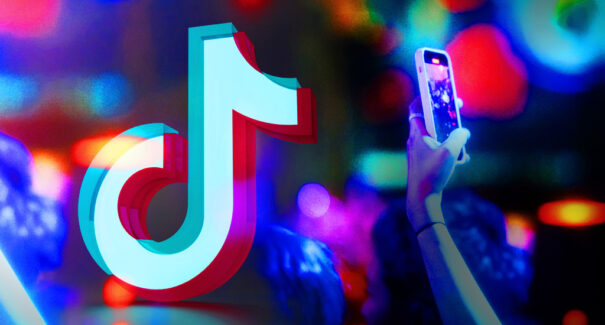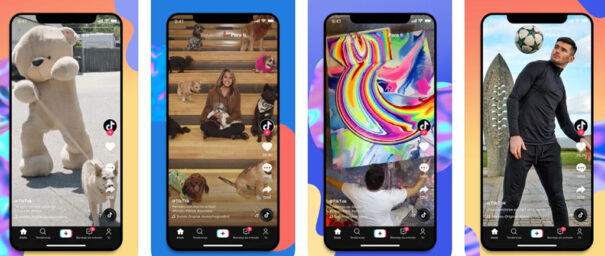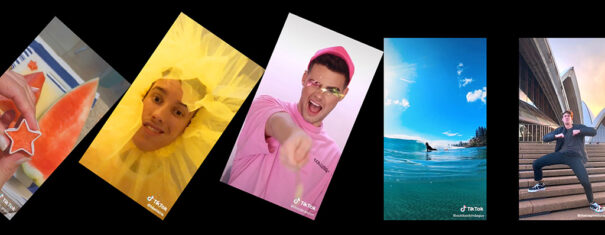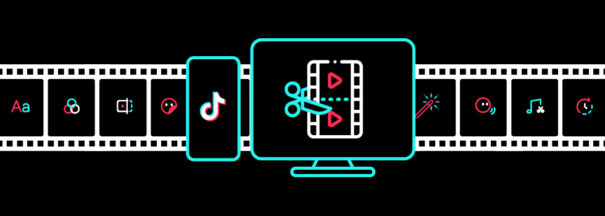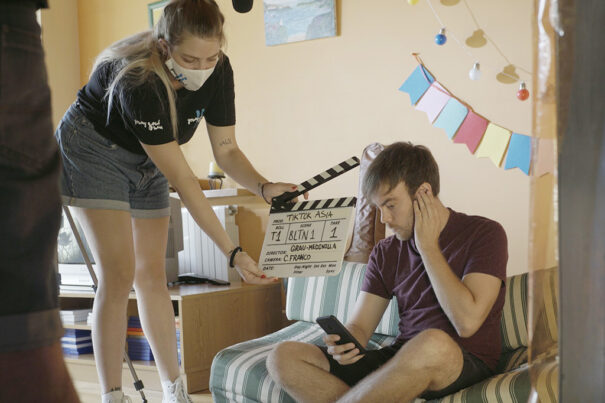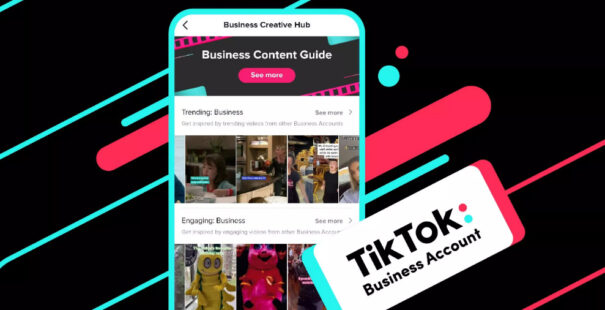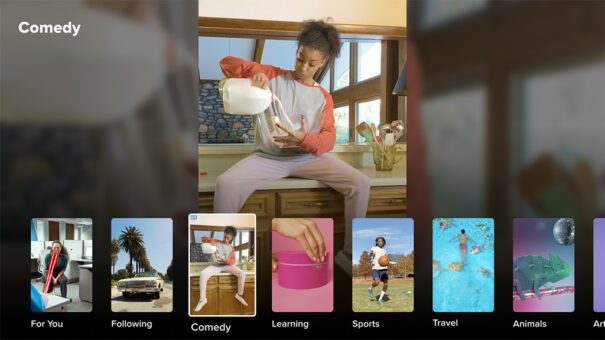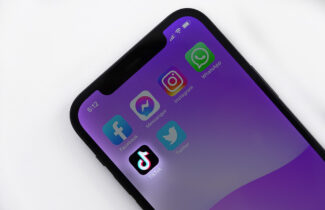TikTok, el audiovisual y el broadcast: una guía para un nuevo universo
Sus posibilidades son infinitas, así como su perspectiva de crecimiento, ampliándose con el paso de los meses más y más grupos de edades. TikTok se presenta como la red social que marcará el relevo generacional de la próxima década. La productora Young Soul Studios, partner de TikTok en España, abre las puertas a un mundo repleto de oportunidades para la industria audiovisual en general, y el broadcast en particular.
Tiktok busca ser mucho más que una red social: es una comunidad que reúne a todo tipo de creadores y les ofrece la posibilidad de compartir vídeos cortos con la ayuda de un versátil editor integrado, un ecosistema repleto de filtros y opciones de producción inteligentes, un catálogo ingente de canciones y un algoritmo que recompensa tanto la originalidad como el formar parte de la tendencia.
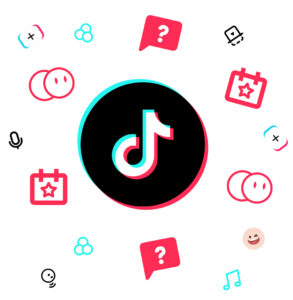 Su crecimiento parece no tener fin. Propiedad de la compañía china ByteDance, en la actualidad se sitúa como la tercera red social del mundo, con una base de usuarios de cerca de 800 millones mensuales. Nacida en 2016 como Douyin, rebautizada en 2017 como TikTok e impulsada mundialmente en 2018 tras la integración de Musical.ly, la debacle de otras alternativas como Vine y Snapchat, la pandemia y las constantes alianzas con influencers y celebridades le han permitido alcanzar sus cifras actuales.
Su crecimiento parece no tener fin. Propiedad de la compañía china ByteDance, en la actualidad se sitúa como la tercera red social del mundo, con una base de usuarios de cerca de 800 millones mensuales. Nacida en 2016 como Douyin, rebautizada en 2017 como TikTok e impulsada mundialmente en 2018 tras la integración de Musical.ly, la debacle de otras alternativas como Vine y Snapchat, la pandemia y las constantes alianzas con influencers y celebridades le han permitido alcanzar sus cifras actuales.
Unas cifras que se sigue batiendo. Según uno de los últimos informes de Sensor Tower, TikTok se sitúa como la aplicación más descargada en el primer trimestre de 2022 (175 millones de descargas), superando por primera vez a Instagram (155 millones) o Facebook (152 millones). Al tiempo que el servicio sigue creciendo y abordando retos para afrontar su salto a una comercialización más agresiva, el número de empresas, broadcasters y productoras interesadas en la plataforma se multiplica. Sin embargo, pocas han explorado todas las posibilidades de la plataforma. Para poder hacerlo, primero deberán comprender a la perfección su naturaleza y posibilidades. Roger Grau y María Medinilla, CEOs y directores de Young Soul Studios, brindan una visión transversal de TikTok.
Adaptándose a un lenguaje único
TikTok es una plataforma que alberga una miríada de lenguajes visuales. Sin embargo, es fácil de identificar algunos puntos comunes, como su apuesta ineludible por el formato vertical, el veloz ritmo de montaje, el grafismo estandarizado, los recursos visuales que identifican la temática del vídeo y, por encima de todo, la cercanía a la hora de crear el contenido.
“El contenido que puedes ver en TikTok tiene una cosa muy buena, y es que aporta verosimilitud. Los usuarios puede grabarse haciendo tonterías, y la gente que lo está viendo puede sentirse identificada porque seguramente ellos han hecho la misma chorrada en algún momento de la vida, o han tenido un periodo de bajón y han querido explicarlo. TikTok te permite transmitir cierta verdad”, comenta Grau, aludiendo a una de las principales características que hacen únicas a esta red social.
Otros elemento compartido por el propio Grau y Medinilla es el “espíritu joven” de la plataforma: un lenguaje desenfadado, cercano, intimista, vulnerable (en ocasiones) y que alude en gran medida a sus realidades. Asumir este lenguaje será requisito imprescindible para consolidar una base sólida de seguidores y poder crear contenido con capacidad de viralización.
La verosimilitud: UGC vs PGC
La verdad (un elemento controvertido, en tanto que las redes sociales no dejan de ser apenas un reflejo o una proyección de una realidad más o menos real) se convierte de forma paradójica en un elemento central de la experiencia de TikTok. El usuario se convierte en el centro de la conversación, frente a lo que sucede en otras plataformas sociales, en las que la marca tiene una voz y un discurso que puede “competir” cara a cara con la voz del usuario.
A este respecto, Medinilla identifica dos claves para entender la producción de contenido en TikTok: UGC y PGC. “El UGC, User Generated Content (Contenido generado por el usuario), alude al tipo de contenido que parece un contenido real, lo que aporta verosimilitud; no puedes identificar que está montado por una productora, sino que parece realmente que es tu vecino el que podría estar dando forma a ese vídeo. Con el PGC, Profesional Generated Content (Contenido generado por profesionales), sí se puede apreciar una diferencia entre el usuario y el profesional”, explica.
El equipo de Young Soul Studios considera imprescindible apostar por una estrategia de creación de contenido UGC, sea cuál sea la productora o la televisión responsable de la creación del contenido. Como señala Grau: “Un joven o joven adulto, si aprecia un vídeo en TikTok con una macroproducción detrás, pensará que es una publicidad más y pasará al siguiente contenido”. Y es que, en TikTok, quizá sea demasiado sencillo hacer el tan temido swipe up.
Una batalla por la atención
3 segundos. Ni uno más, ni uno menos. Ese es el tiempo estimado por TikTok, confirmado por el equipo de Young Souls Studios, para capturar y retener la atención del espectador. Si en ese periodo no se consigue crear un conexión con el espectador, no queda claro el contenido del vídeo o no se presenta una temática de interés de manera visualmente atractiva, el usuario seguirá buceando en el denso océano de contenido que representa la plataforma: “O te quedas, o te vas, no hay margen de maniobra. El primer gran reto a tener en cuenta, ya sea el contenido un gag, ficción o una receta, es conseguir algo que enganche superrápido”.
Existen varias técnicas que se pueden aplicar para minimizar el riesgo de swipe up. Desde una perspectiva más “seria”, reconoce Medinilla, los usuarios de TikTok suelen plantear una situación, la cual puede generar interés que te invite a quedarte para ver cómo finaliza. Otra técnica frecuente es la construcción de bucles visuales que inviten al usuario a ver cómo finaliza una receta, un consejo o un vídeo de maquillaje, y, al mismo tiempo, favorezcan el visionado en bucle del contenido: “En vez de empezar cortando unas patatas, ya que a nadie le va a interesar un cuchillo con una mano, ves un final muy chulo, piensas en cómo se puede hacer, y te quedas”.
Ese golpe visual, en ocasiones, van acompañadas por unas técnicas más cuestionables desde el punto de vista del contenido, pero que indudablemente son efectivas. Medinilla continúa aportando detalles: “Lo que funciona mucho es meter un ruido fuerte. Puedes estar viendo TikToks y, de repente, suena un ruido fuerte y, solo por eso, no haces el swipe up y te quedas. Es algo muy absurdo y, de hecho, en muchas ocasiones el grito inicial o el golpe de música no tiene nada que ver con el contenido, pero consigue capturar tu atención”.
@cruztc28 #nunca confíes en nadie #viral #video #porinfiel🙄🤚 #cachitodecielo #fyp #2022 #parte1 #sigueme_para_mas_videos_asi ♬ sonido original – *cely cruz Tamara 28🥰
Fidelizar o desaparecer
La limitada duración de los TikTok, los cuáles suelen extenderse entre los 15 y los 60 segundos, implica la necesidad de generar contenido de manera constante para conseguir fidelizar a la audiencia y al siempre cambiante algoritmo.
Grau subraya que el mantenimiento de la comunidad es fundamental para persistir en una plataforma repleta de estímulos en la que es fácil ser visto, pero también olvidado: “Cada vez hay más empresas que están empezando a entender que en TikTok debes tener un mantenimiento. Si solo subes un vídeo a la semana vas a morir en el intento. Tiene que haber una continuidad”. El equipo de Young Soul apunta que, como mínimo, se deben subir 3 vídeos diarios.
La creación de contenidos de esta plataforma, por tanto, nada tiene de espontáneo. Al margen de posibles improvisaciones, existe una profunda labor de estructuración y programación de contenidos para mantener la fidelidad de los seguidores. En ocasiones, serán los vídeos los que inviten al usuario a permanecer atentos al desarrollo del perfil. Como apunta Grau: “En TikTok se utiliza mucho el “Parte 1”. Es un rótulo que se utiliza muchísimo para ganar la atención. Es muy corto, lo vas a leer sí o sí, y, aunque quieras hacer un swipe up, el no saber de qué va a hablar invita a quedarte”. Como el lector podrá intuir, cada uno de estos episodios contarán con ganchos lo suficientemente atractivos para hacer que el usuario viaje al perfil de TikTok para conocer el final de un relato.
Las opciones de creación: editor, efectos, derechos…
A diferencia del que podría ser su mayor competidor en la actualidad, Instagram a través de su función reels, TikTok contiene en su core un profundo conjunto de herramientas de edición que permiten al usuario experimentar y crear contenido con facilidad. Como reconoce Medinilla, la primera aproximación a esta plataforma puede ser caótica si el usuario procede de editores más tradicionales y profesionales, pero la curva de aprendizaje es extremadamente sencilla.
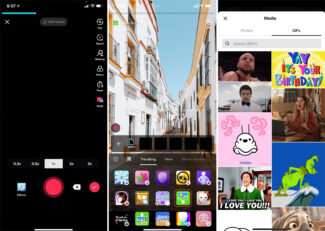 El sistema integra la grabación con la edición, de modo que ambos procesos se desarrollan en paralelo. El usuario puede grabar, parar, rebobinar una grabación e incluso almacenar varios proyectos en tiempo real para continuar su producción a posteriori. Esta herramienta se completa con una amplísima selección de efectos que van añadiéndose día a día: esquemas de iluminación, opciones para crear cromas, soluciones para reaccionar en tiempo real a otros vídeos o efectos de realidad virtual generados en tiempo real.
El sistema integra la grabación con la edición, de modo que ambos procesos se desarrollan en paralelo. El usuario puede grabar, parar, rebobinar una grabación e incluso almacenar varios proyectos en tiempo real para continuar su producción a posteriori. Esta herramienta se completa con una amplísima selección de efectos que van añadiéndose día a día: esquemas de iluminación, opciones para crear cromas, soluciones para reaccionar en tiempo real a otros vídeos o efectos de realidad virtual generados en tiempo real.
Desde el punto de vista del sonido, el usuario, más allá de poder gestionar varios canales de audio y realizar una mezcla básica, tiene a su disposición un ingente catálogo de canciones, bandas sonoras y efectos para acompañar cada una de sus piezas. Como bien reconoce Grau, la cuestión de los derechos audiovisuales en TikTok es bastante laxa en lo que representa a los creadores independientes. Como abordaremos más adelante, la cuestión cambia completamente en el caso de que sea una empresa la que está creando contenido.
El riesgo de crear desde herramientas externas
Si el ecosistema de TikTok no resulta lo suficientemente atractivo para la productora o el broadcaster encargado de crear contenido, siempre tienen la opción de subir un vídeo en formato H.264. Sin embargo, es probable que el alcance del contenido sea más limitado que si este se genera en su totalidad desde la propia aplicación.
“El algoritmo beneficia el usar las propias herramientas de TikTok. Por ejemplo, si utilizas una canción de las disponibles en TikTok como usuario, el algoritmo de ponderará positivamente. Sin embargo, si has subido un vídeo y has introducido la canción desde fuera, no tendrás la misma suerte”, traslada Grau.
Todo depende, en cualquier caso, del alcance y proyección del usuario. Es posible combinar, y de hecho se realiza con cada vez más frecuencia, UGC con PGC para conseguir cumplir diferentes objetivos de una determinada campaña en TikTok.
Claves técnicas: 9:16 vs 16:9, encuadre…
En el caso de decidirse por crear contenido desde una plataforma externa, el equipo de Young Soul Studio identifica elementos imprescindibles para conseguir encajar visualmente dentro de TikTok.
Dejando al margen el mantener la estética UGC, Grau y Medinilla consideran que es imprescindible exportar el contenido en 1080 x 1920 (una relación de aspecto de 9:16) en formato .mp4, lo que servirá para que el vídeo sea procesado correctamente en la plataforma. A la hora de capturar imágenes, recomiendan grabar en un 16:9 convencional implementando escuadras en la propia configuración de la cámara para que el director y camarógrafo sean capaces de identificar el look final de la pieza. Luego, vendrán los reencuadres correspondientes, al igual que cómo suele suceder al rodar en 4K para luego exportar en HD.
Sobre la composición del plano, desde TikTok se recomienda que todo lo importante suceda en el centro de la imagen, lo cual explica que en ocasiones se realicen encuadres con unos aires desproporcionados en comparación con los esquemas de producción tradicionales. “Si estás haciendo una receta de fruta, la fruta debe verse en el centro. No hay otra opción”, traslada Medinilla.
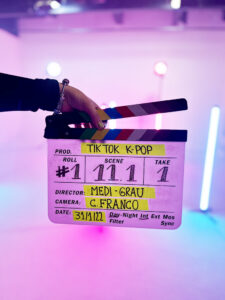 El destello: fotografiando para TikTok
El destello: fotografiando para TikTok
La dirección de fotografía, curiosamente, recupera las máximas de la televisión más tradicional, esa que afirma indiscretamente que una producción oscura y carente de colores y brillo provocará el zapping por parte del telespectador.
“Nada de oscuridad. Cuando más brillo, color y luz haya, mejor”, sentencia Medinilla. Escenas iluminadas homogéneamente, colores saturados, uso de aros de luz LED… Todo suma para conseguir focalizar la atención al elemento que el creador decida. Aún con todo, como no podría ser de otra forma, se admiten excepciones: “Si a alguien le diera por hacer una ficción de terror, obviamente no tendría sentido, pero para la aplicación en general es lo que funciona”, comenta Medinilla, a lo que Grau apunta: “Los usuarios más destacados se permiten licencias, como realizar iluminación en base a dos únicos colores o apagarlos en algunas ocasiones. Sin embargo, siempre que aparezcan personas, es fundamental que estas estén bien iluminadas”.
Los directos: posibilidades, competidores…
Desde hace unos pocos meses, TikTok lo está apostando todo a los directos. Desde fuera, se podría pensar que la plataforma, con este movimiento, “traiciona” a su propia identidad con un formato que requiere de un consumo más extenso en el tiempo frente a la volatilidad de su contenido más tradicional. Nada más lejos de la realidad.
Los directos de TikTok se diferencian de sus principales competidores, como puedan ser Twitch o Instagram, a través de la adopción de su propio lenguaje audiovisual. El montaje es hiperdinámico, la imprevisibilidad reina y el engagement se multiplica. Como ejemplos, las recientes creaciones impulsadas por el propio equipo creativo de la plataforma, protagonizadas por artistas como Rosalía o Camila Cabello: “Apelan a un público que necesita cosas nuevas con un lenguaje muy definido. (…) Instagram quizá se ha quedado atrás, ya que ha apostado por el tú a tú. Por otro lado, los grandes nombres de Twitch apuestan por una estética televisiva”, apunta Medinilla.
Con respecto a la producción de un directo en TikTok, esta se puede realizar de dos maneras: la primera, desde la propia aplicación con las opciones para creadores que proporciona. La segunda parte de un viejo conocido del panorama audiovisual: el software abierto OBS Studio, que permite conectar varias fuentes e incluir elementos visuales para crear un directo más profesionalizado. No son pocos los fabricantes de equipamiento profesional que están empezando a hacer compatible sus herramientas de producción con TikTok.
Monetización para empresas y broadcasters
TikTok es una plataforma en evolución que ha apostado desde su lanzamiento por generar una red social con un lenguaje y estética nítido, de forma que todavía le queda recorrido por delante para aprovechar al máximo sus posibilidades como canal de comunicación. En este caso, a día de hoy, la monetización de la generación de contenido para profesionales está fuera de la mesa.
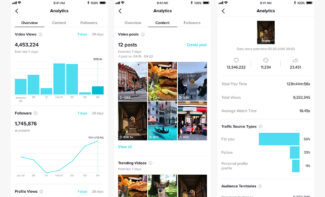 Las grandes empresas, productoras o broadcasters pueden ganar notoriedad a través de la plataforma social, pero no disponen de un sistema de monetización por visualizaciónes, de suscripciones o mecenazgo como existen en otras plataformas como YouTube o Twitch. Eso sí, estas contarán con herramientas exclusivas para medir el alcance de las publicaciones y la posibilidad de invertir dinero para difundir piezas concretas.
Las grandes empresas, productoras o broadcasters pueden ganar notoriedad a través de la plataforma social, pero no disponen de un sistema de monetización por visualizaciónes, de suscripciones o mecenazgo como existen en otras plataformas como YouTube o Twitch. Eso sí, estas contarán con herramientas exclusivas para medir el alcance de las publicaciones y la posibilidad de invertir dinero para difundir piezas concretas.
Del mismo modo, la creación de contenidos, si se realiza desde la propia plataforma, se hará con recursos limitados en comparación con el resto de usuarios: “Tienes muchísimas más limitaciones a nivel de música si eres una empresa. TikTok no deja utilizar la canción que es trending si eres una marca, porque no quieren que estas asimilen las canciones que están destacadas. ¿Qué hace TikTok, que creo que es una buena solución? Tienen un banco de canciones exclusivo con otro tipo de música”.
Por el contrario, sí que existe un programa de monetización para creadores que premia la viralidad y las visualizaciones, si bien este está restringido a autores independientes.
@nosotros.serie ¿Confiarías en tu #família? 🤔 #tiktok #cuarentena #yomequedoencasa #boredathome #serie #webseries #tiktokserie #viral #acting #bellaciao #madreamer ♬ original sound – Young Soul Studios
Creando una serie: el caso de Nosotros
TikTok otorga numerosas posibilidades que van más allá de la creación del área de no ficción. Young Soul defiende la posibilidad de crear contenido adaptado al lenguaje, narrativa y dinámica de la plataforma.
Uno de los primeros proyectos de la productora fue la creación de la serie Nosotros, una iniciativa apoyada por el Ayuntamiento de Barcelona, el Consell de l’Audiovisual de Catalunya, la asociación educativa EPIC, la fundación Montblanc y la empresa Atrápalo, la cual presentaba en un formato tradicional problemática adolescente como el acoso escolar o la violencia dentro del aula desde un punto de vista lúdico. En 2020, una vez finalizada la producción de las dos primeras temporadas y con una tercera en standby a raíz de la pandemia, Young Soul Studios decidió llevar el formato a TikTok. Grau traslada los detalles: “Adaptamos el formato de la serie. Volvimos a montar los capítulos, que duraban entre 5 y 10 minutos, para adaptarlos al minuto máximo que permitía la plataforma. Estuvimos publicando durante dos meses y el boom fue espectacular: conseguimos 40.000 seguidores, 4 millones de visualizaciones acumuladas, 300.000 likes, miles de comentarios…”
La adaptación de un formato tradicional al TikTok no suele funcionar bien. Desde Young Soul se defiende, ante todo, la creación de contenido adaptado al formato, lenguaje y dinámica de la plataforma. No obstante, el estilo de la ficción se adaptaba a la naturaleza de la plataforma, como afirma Medinilla: “Aunque es una serie de ficción rodada con equipos de manera profesional, la realizamos cámara en mano con planos secuencias largos. Esto provocó que incluso hubo personas que nos preguntaban cómo nos grabábamos. Ahí conseguimos romper esa barrera, ya que la gente pensó que quien había detrás de la producción era una persona más de la red”.
Promocionar un formato desde TikTok
Otro uso no convencional de TikTok, pero notablemente efectivo, es la promoción y ampliación del contenido de una ficción serial o una película. Para ello, Young Soul apuesta por lo transmedia, un enfoque complementado con la publicación de elementos behind the scenes.
Esta aproximación ya se está impulsando desde diferentes plataformas de alcance mundial. En concreto, Grau se detiene a poner en valor la notable campaña que firmó HBO para la promoción de la segunda temporada de Euphoria: “HBO ha conseguido retener al público durante los dos o tres meses que ha estado emitiendo la segunda temporada de Euphoria. Lo ha hecho generando muchísimo bombo en TikTok, generando muchos trends y muchos challenges. La gran mayoría han surgido desde la misma HBO, pero también desde diferentes influencers con los que TikTok colabora. Esto ha hecho que un adolescente que inicialmente no se planteaba ver la serie, haya decidido ver ambas temporadas de la serie. Y eso es algo muy difícil”.
¿La televisión en TikTok?
Poco a poco, las televisiones españolas van dando sus primeros pasos en el ecosistema de TikTok. Ya sea con colaboraciones externas, como es la opción predilecta de Mediaset, o con contenido original, como es el de una importante selección de cadenas públicas, tratan de encontrar su espacio con resultados dispares.
Medinilla y Grau consideran que, en muchas ocasiones, no se están dando los pasos correctos. Identifican que la manera de interactuar con la gente no es la correcta, ya que frecuentemente se optan por unos lenguajes muy alejados a los de TikTok: “Ves que cogen una serie del 2000, que parte del público de TikTok todavía no había nacido y crean un gag cómico. A mí me podrá hacer mucha gracia, pero el niño que no había nacido no entenderá nada”, comenta Medinilla. Por otro lado, Grau destaca que la comunicación global no tiene cabida en TikTok: “No puedes crear contenido homogéneo para que lo vea tanto el consumidor de 14 años como el de 90, porque entonces no llegarás a ninguno de los dos”.
Ante esta perspectiva, Young Soul Studios, que recientemente han comenzado a asesorar al canal Super3 de CCMA para apoyar la generación de contenidos para TikTok, considera que la pregunta que las televisiones deberían plantearse es “qué tipo de contenido tengo que crear para llegar a un público en concreto”. “Las televisiones deben intentar conseguir adaptar el lenguaje que tienen a los nuevos medios a partir del público al que deben acercarse. Deben hacer un análisis para identificar el público que realmente están buscando, qué consume este público y cuándo hacen swipe up y cuándo no”, remarca Grau.
A este respecto, también se considera imprescindible estudiar en detalle el tipo de contenido a crear: “Este contenido no puede ser introducir un clip de la tele, ya que eso lo puede hacer cualquiera. Si voy a hacer un programa de televisión, tengo que saber detalles de este programa y crear un contenido transmedia que pueda generar audiencia específica en TikTok y, a la vez, que este contenido resulte lo suficientemente interesante para que den el salto a la tele”.
Al final, las televisiones no tienen que llevar su contenido a TikTok, sino que tienen que crear contenido en TikTok para buscar, encontrar o recuperar su audiencia.
Una vez más…
El equipo de Young Soul Studios, como profesionales jóvenes con una extensa experiencia en TikTok, les preocupa que las televisiones estén perdiendo la oportunidad que representa TikTok por no entender la idiosincrasia de la plataforma. Medinilla tiene claro que “las generaciones cambian igual que cambia el día a día, por lo que televisiones, productoras y marcas se deben adaptar a lo que hay. Al final, nosotros somos nativos digitales, pero si lo comparas con las nuevas generaciones, se nota mucho la diferencia”.
Ante esta perspectiva, Grau considera que se debe realizar un esfuerzo para dedicar esfuerzos económicos y de infraestructura para adaptarse a estas nuevas tendencias. “A la vez que las televisiones realizan el paso de ir a TikTok, deben valorar especialmente qué gente lleva estos perfiles, porque exclusivamente la gente más joven es que tiene más integrado el lenguaje actual que conduce esta red. (…) Las generaciones jóvenes no venimos a quitar trabajo, sino a fomentar nuevos lenguajes que puedan ser funcionales para todos”.
“O te adaptas o acabas muriendo”, sentencia Grau. Las generaciones cambian, pero los diagnósticos permanecen.
Un reportaje de Sergio Julián Gómez
¿Te gustó este artículo?
Suscríbete a nuestro NEWSLETTER y no te perderás nada.



